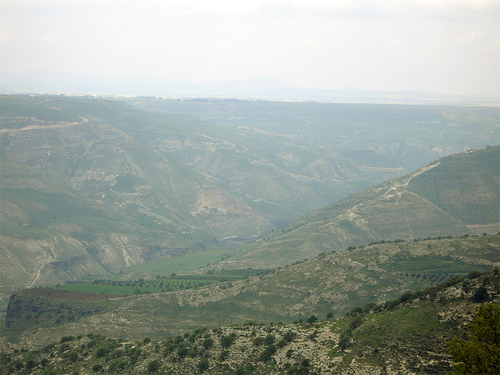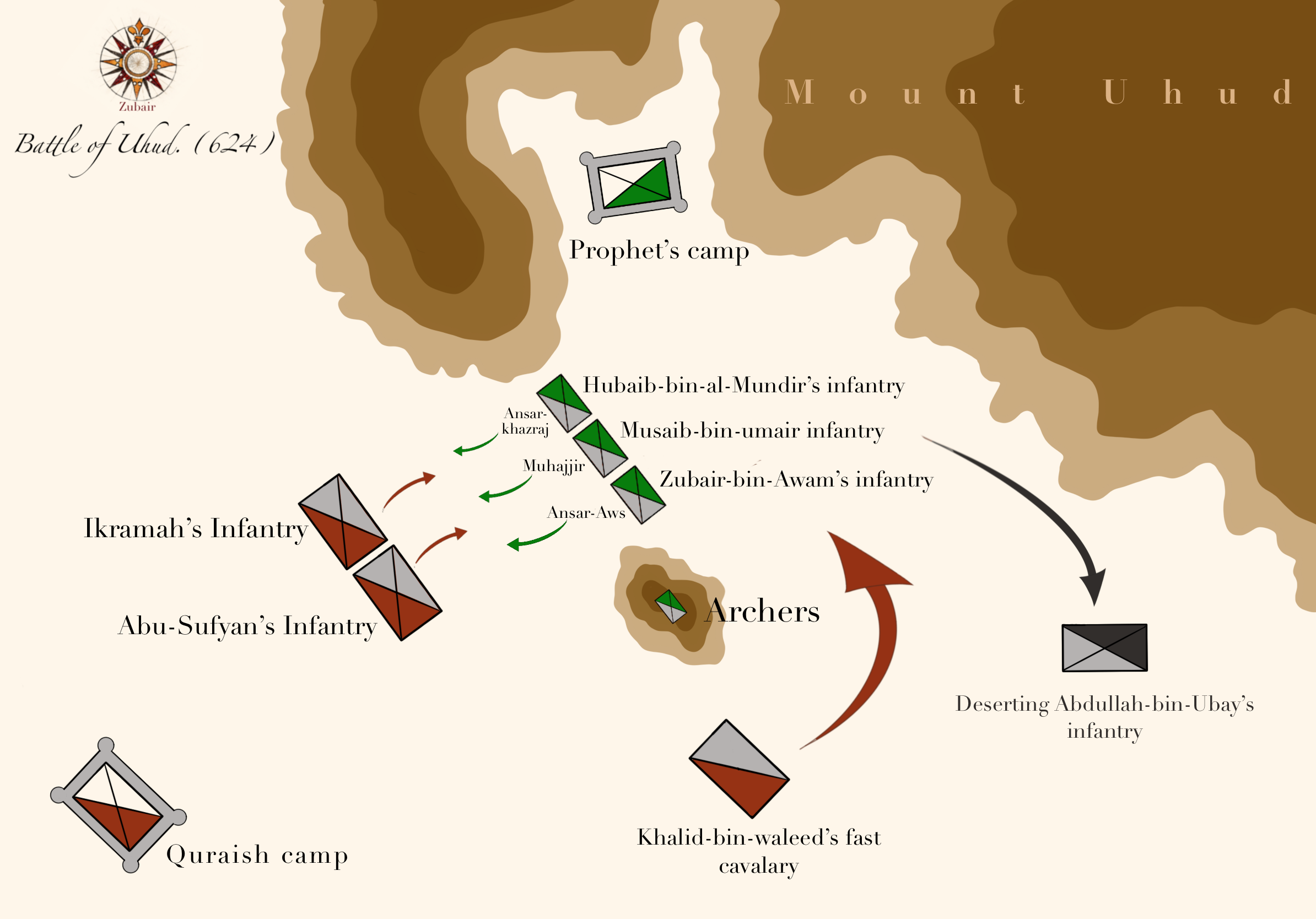|
Raid Of Amr Ibn Al-As
The raid of Amr ibn al-As, to Ruhat, took place in January 630 AD, 8AH, 9th month, of the Islamic Calendar. Raid to demolish Suwa In the same month the idol Al-Uzza was demolished by Khalid ibn al-Walid, ‘Amr bin Al-‘As was sent on an errand to destroy another idol, worshipped by Banu Hudhail, called Suwa‘. It used to stand at a distance of three kilometres from Makkah. On a question posed by the door-keeper, ‘Amr said he had been ordered by Muhammad to knock down the idol. The man warned ‘Amr that he would not be able to do it. ‘Amr approached the idol and destroyed it, then he broke the casket beside it but found nothing. The man immediately embraced Islam. See also *Military career of Muhammad *List of expeditions of Muhammad __NOTOC__ The list of expeditions of Muhammad includes the expeditions undertaken by the Muslim community during the lifetime of the Islamic prophet Muhammad. Some sources use the word ''ghazwa'' and a related plural ''maghazi'' in a narro ... [...More Info...] [...Related Items...] OR: [Wikipedia] [Google] [Baidu] |
Amr Ibn Al-As
( ar, عمرو بن العاص السهمي; 664) was the Arab commander who led the Muslim conquest of Egypt and served as its governor in 640–646 and 658–664. The son of a wealthy Qurayshite, Amr embraced Islam in and was assigned important roles in the nascent Muslim community by the Islamic prophet Muhammad. The first caliph Abu Bakr () appointed Amr as a commander of the conquest of Syria. He conquered most of Palestine, to which he was appointed governor, and led the Arabs to decisive victories over the Byzantines at the battles of Ajnadayn and Yarmouk in 634 and 636. Amr launched the conquest of Egypt on his own initiative in late 639, defeating the Byzantines in a string of victories ending with the surrender of Alexandria in 641 or 642. It was the swiftest of the early Muslim conquests. This was followed by westward advances by Amr as far as Tripoli in present-day Libya. In a treaty signed with the Byzantine governor Cyrus, Amr guaranteed the security of Egy ... [...More Info...] [...Related Items...] OR: [Wikipedia] [Google] [Baidu] |
Al-Uzza
Al-ʻUzzā ( ar, العزى or Old Arabic l ʕuzzeː was one of the three chief goddesses of Arabian religion in pre-Islamic times and she was worshiped by the pre-Islamic Arabs along with al-Lāt and Manāt. A stone cube at Nakhla (near Mecca) was held sacred as part of her cult. She is mentioned in Qur'an 53:19 as being one of the goddesses who people worshiped. Al-ʻUzzā, like Hubal, was called upon for protection by the pre-Islamic Quraysh. "In 624 at the ' battle called Uhud', the war cry of the Qurayshites was, "O people of Uzzā, people of Hubal!". Al-‘Uzzá also later appears in Ibn Ishaq's account of the alleged Satanic Verses. The temple dedicated to al-ʻUzzā and the statue was destroyed by Khalid ibn al Walid in Nakhla in 630 AD."He sent Khali ... [...More Info...] [...Related Items...] OR: [Wikipedia] [Google] [Baidu] |
Expedition Of Khalid Ibn Al-Walid (Nakhla)
The expedition of Khalid ibn al-Walid to Nakhla took place in January 630 AD, 8AH, in the 9th month of the Islamic Calendar. Khalid ibn al-Walid was sent to destroy the image of the Goddess al-Uzza which was worshipped by polytheists; he did this successfully. Expedition and demolition of Temple Soon after the Conquest of Mecca, Muhammad began to dispatch expeditions on errands aiming at eliminating the last symbols reminiscent of pre-Islamic practices. He sent Khalid bin Al-Walid in Ramadan 8 A.H. to a place called Nakhlah, where there was an idol of the goddess called Al-‘Uzza worshipped by the Quraish and Kinanah tribes, and guarded by custodians from Banu Shaiban. Khalid, at the head of thirty horsemen, arrived at the spot and destroyed the idol. Upon his return, Muhammad asked him if he had seen anything else there, to which Khalid replied, "No". He was told that the idol had not been destroyed and that he must go back and fulfill the task. Khalid went again to Nakh ... [...More Info...] [...Related Items...] OR: [Wikipedia] [Google] [Baidu] |
Khalid Ibn Al-Walid
Khalid ibn al-Walid ibn al-Mughira al-Makhzumi (; died 642) was a 7th-century Arab military commander. He initially headed campaigns against Muhammad on behalf of the Quraysh. He later became a Muslim and spent the remainder of his career in service to Muhammad and the first two Rashidun successors: Abu Bakr and Umar. Following the establishment of the Rashidun Caliphate, Khalid held a senior command in the Rashidun army; he played the leading role in the Ridda Wars against rebel tribes in Arabia in 632–633, the initial campaigns in Sasanian Iraq in 633–634, and the conquest of Byzantine Syria in 634–638. As a horseman of the Quraysh's aristocratic Banu Makhzum, which ardently opposed Muhammad, Khalid played an instrumental role in defeating Muhammad and his followers during the Battle of Uhud in 625. In 627 or 629, he converted to Islam in the presence of Muhammad, who inducted him as an official military commander among the Muslims and gave him the title of (). ... [...More Info...] [...Related Items...] OR: [Wikipedia] [Google] [Baidu] |
Suwa'
Suwāʿ ( ar, سواع) is mentioned in the Qur'an (71:23) as a deity of the time of the Prophet Noah. And they say: Forsake not your gods, nor forsake Wadd, nor Suwa', nor Yaghuth and Ya'uq and Nasr. (Qur'an 71:23) Maulana Muhammad Ali adds the following commentary on the passage: The names of the idols given here are those which existed in Arabia in the Prophet A prophet is a person who is believed to speak through divine inspiration. Prophet or The Prophet may also refer to: People People referred to as "The Prophet" as a title * The Prophet (musician) (born 1968), Dutch gabber and hardstyle DJ ...'s time, and hence some critics call it an anachronism. ..According to IʿAb, the idols of Noah's people were worshipped by the Arabs, Wadd being worshipped by Kalb, Suwāʿ by Hudhail, Yaghūth by Murād, Yaʿūq by Hamadān and Nasr by Ḥimyar ( B. 65:lxxi, 1). The commentators say that Wadd was worshipped in the form of a man, Suwāʿ in that of a woma ... [...More Info...] [...Related Items...] OR: [Wikipedia] [Google] [Baidu] |
Military Career Of Muhammad
The military career of Muhammad (''c.'' 570 – 8 June 632), the Islamic prophet, encompasses several expeditions and battles throughout the Hejaz region in the western Arabian Peninsula which took place in the final ten years of his life, from 622 to 632. His primary campaign was against his own tribe in Mecca, the Quraysh. Muhammad proclaimed prophethood around 610 and later migrated to Medina after being persecuted by the Quraysh in 622. After several battles against the Quraysh, Muhammad conquered Mecca in 629, ending his campaign against the tribe. Alongside his campaign against the Quraysh, Muhammad led campaigns against several other tribes of Arabia, most notably the three Arabian Jewish tribes of Medina and the Jewish fortress at Khaybar. He expelled the Banu Qaynuqa tribe for violating the Constitution of Medina in 624, followed by the Banu Nadir who were expelled in May 625 after being accused of plotting to assassinate him. Finally, in 628, he besieged an ... [...More Info...] [...Related Items...] OR: [Wikipedia] [Google] [Baidu] |
List Of Expeditions Of Muhammad
__NOTOC__ The list of expeditions of Muhammad includes the expeditions undertaken by the Muslim community during the lifetime of the Islamic prophet Muhammad. Some sources use the word ''ghazwa'' and a related plural ''maghazi'' in a narrow technical sense to refer to the expeditions in which Muhammad took part, while using the word ''sariyya'' (pl. ''saraya'') for those early Muslim expeditions where he was not personally present. Other sources use the terms ''ghazwa'' and ''maghazi'' generically to refer to both types of expeditions. Early Islamic sources contain significant divergences in the chronology of expeditions. Unless noted otherwise, the dates given in this list are based on ''Muhammad at Medina'' by Montgomery Watt, who in turn follows the chronology proposed by Leone Caetani Leone Caetani (September 12, 1869 – December 25, 1935), Caetani, Duke of Sermoneta (also known as Prince Caetani), was an Italian scholar, politician, and historian of the Middle East. Caet ... [...More Info...] [...Related Items...] OR: [Wikipedia] [Google] [Baidu] |


